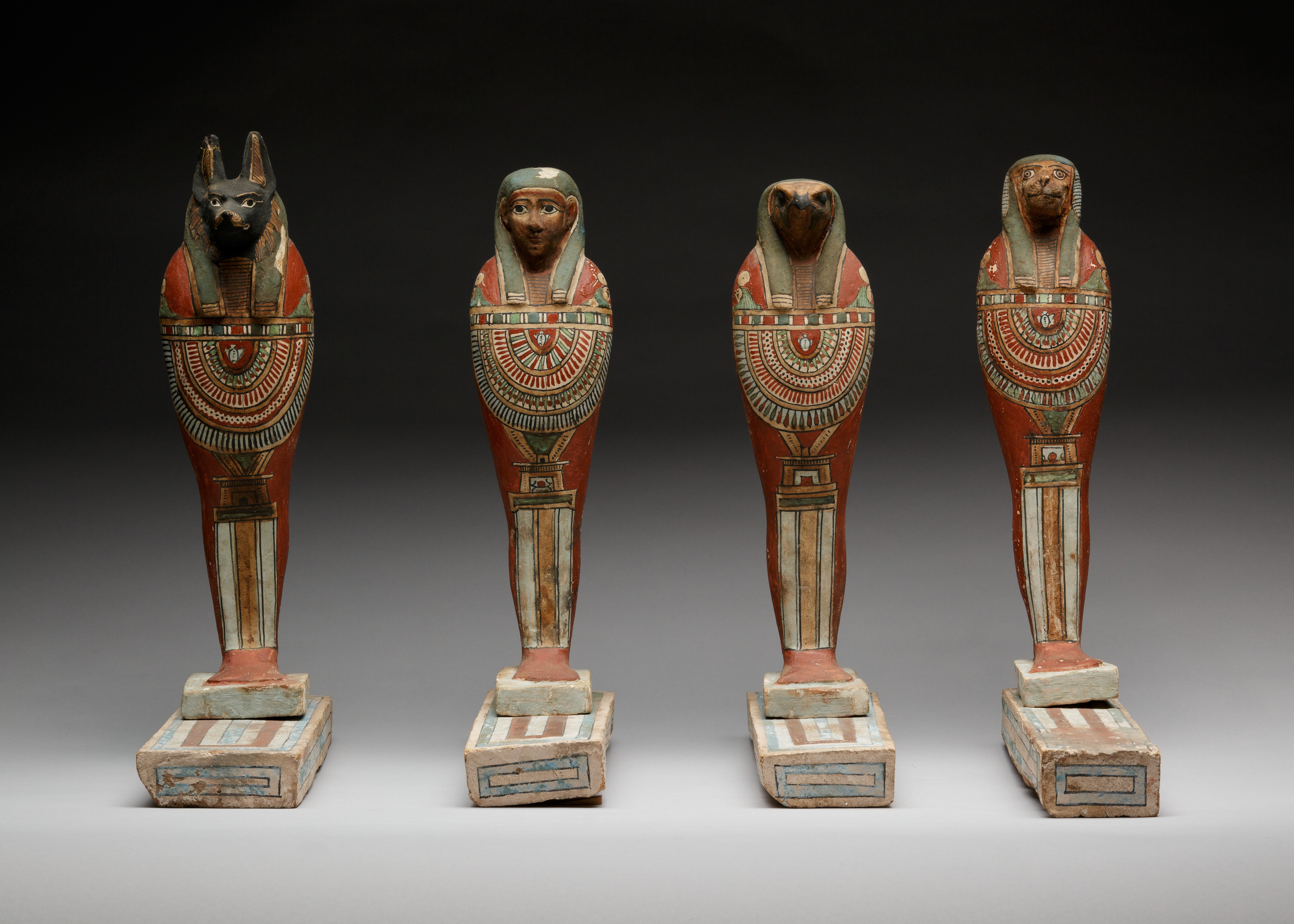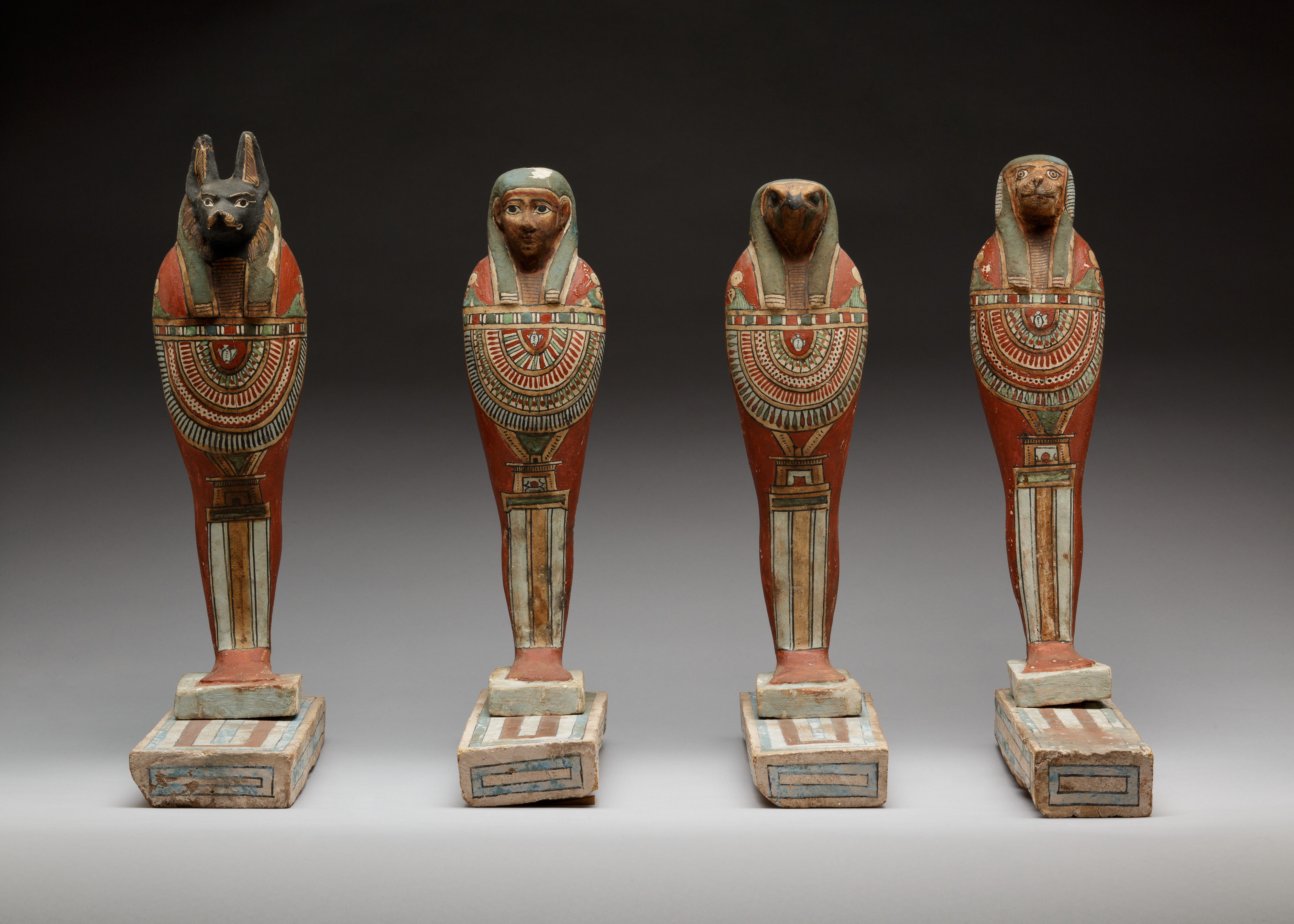Funerary Figure of Hapy
Late Period–Ptolemaic Period
This baboon-headed figure represents the god Hapy, who protected the lungs. He is one of the four so-called sons of Horus that are often depicted as mummies, each with a different head (for the other three statuettes belonging to the same set, see 12.182.37a-c). The sons of Horus were deities who protected the internal organs and are probably best known from their representations on the lids of the canopic jars that contained mummified viscera. They were also thought to assist in the process of mummification and to provide nourishment, possibly because they were associated with the internal organs. Thus they had a general protective function for the deceased.
On the lower legs is a space for inscriptions; this was left blank, meant to be filled in later (after the set of statuettes sold?) with a short text that would have included the name of the owner. Since no inscription was added, this is unfortunately unknown today.
Due to rights restrictions, this image cannot be enlarged, viewed at full screen, or downloaded.
This artwork is meant to be viewed from right to left. Scroll left to view more.




